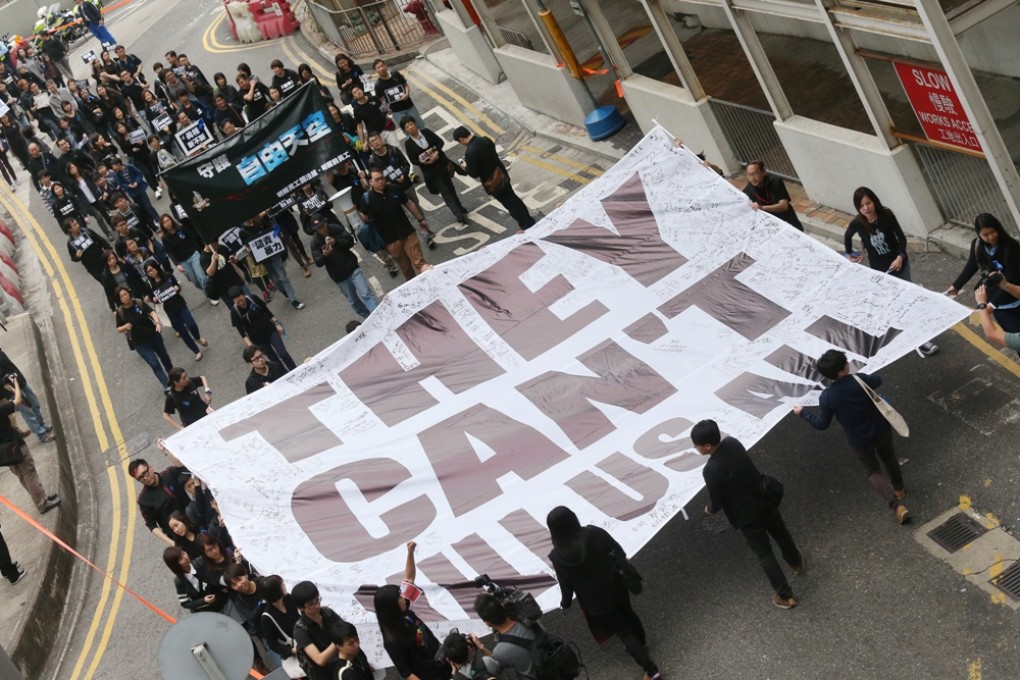
I seldom wear black. But I have this black T-shirt I put on two times a year – once for the Tiananmen Square Massacre commemoration on 4 June and the other for the pro-democracy protest on 1 July. Over the years, this T-shirt, the only piece of black clothing I own, has come to symbolise both sadness and discontent.
Since C.Y. Leung moved into the Government House in 2012, I have been wearing my black T-shirt a lot more often. If it wasn’t for a mass protest against the national education curriculum, it was for a demonstration in support of HKTV’s bid for a broadcasting license. There seems to be plenty of sadness and discontent to go around these days. Yesterday morning, I found myself once again rummaging through the closet looking for my protestor’s uniform, this time to defend the future of our press freedom. With a heavy heart, I slipped the black thing over my head and made my way to Tamar.
What happened this past Wednesday has shocked the city to the core. Kevin Lau, former editor-in-chief of Ming Pao – one of the city’s major Chinese language newspapers – was attacked by two knifemen on his way to breakfast in Sai Wan Ho. We don’t know which is worse: that Lau was stabbed six times in his back and legs, or that it took place in public and in broad daylight. The assault reeks of the brazenness we expect only in the Mexican drug war or a turf battle between rival gangs in Russia. It makes Hong Kong, one of the safest international cities in the world, look like a lawless backwater.

These violent episodes all have one thing in common: the crime never gets solved. Despite offers of multi-million dollar rewards, the bad guys aren’t caught and the police investigation simply goes cold after a few months. Even if the police manage to capture the assailants, perhaps with the help of eyewitnesses and security cameras, they won’t find out who the mastermind behind the attack is, ever. In this day and age, a text message and the target’s headshot are all it takes to order a hit. Anonymity has emboldened the cowardly; technology has enabled the mercenary. That puts journalists – people who make their living upsetting the apple cart – in an ever vulnerable position.
When the police can’t or won’t do much to progress the investigation, the burden falls back on the shoulders of the journalists themselves. Ming Pao staff is currently sifting through dozens of news stories overseen by Kevin Lau before he was let go by the newspaper in January (his termination is a whole other story) to identify what might have gotten the editor in trouble. Among the possible culprits, the one that has generated the most interest is Lau’s exposé about offshore assets stashed away by Beijing’s ruling elite. Written in collaboration with the International Consortium of Investigative Journalists (ICIJ), the story is believed to have ticked off some powerful big wigs up north. So far, the ICIJ has found no evidence linking the attack to the investigative report and so the guessing game continues.
